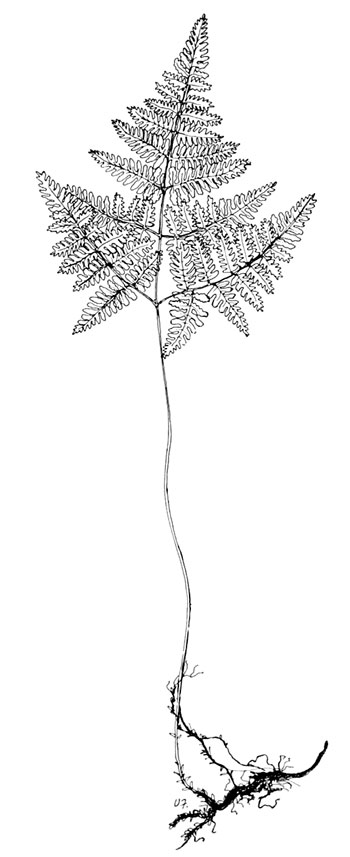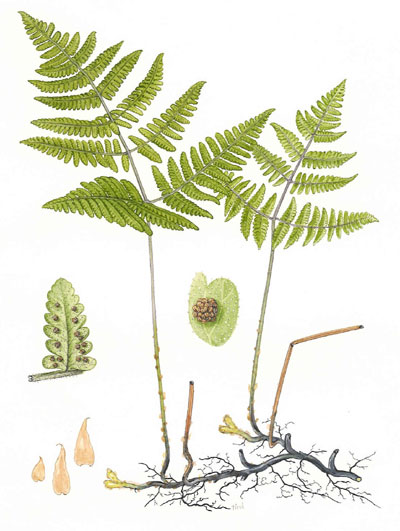|
Hardy Fern Home G. robertianum resources All Ferns � Woodsiaceae �� Gymnocarpium
�Other Genera
|
| Gymnocarpium robertianum | ||
Limestone oak fern, Robert's oak fern, Northern oak fern | ||
|
Etymology
Resembling Geranium robertianum.
Description
Rhizome: long-creeping, dark brown or black, forking.
Frond: 40 cm high by 15 cm wide, deciduous, monomorphic, blade/stipe ratio: 3:2 to 2:1. Stipe: grooved, dull green, scaly at the base, soon falling, vascular bundles: 2, oblong. Blade: 2-pinnate-pinnatifid, triangular, stiff, dull surface, very glandular, especially on the lower surface and the rachis. Pinnae: 9 to 12 pair, lowest pair similar in form (not size) to the next pair; pinnules lower basal pinnule of the lowest pinnae cut like adjacent pinnules (unlike D. dryopteris); costae grooved above, continuous from rachis to costae; margins entire to slightly crenate; veins free, simple or forked. Sori: round, closer to the margin, on both edges of the segments, indusium: absent, sporangia: brownish, maturity: midsummer. Dimensionality: vertical stipe bends towards the horizontal in the rachis, but not as much as in the other species. Culture
Habitat: calcareous woodlands or swamps, uncommon.
Distribution: cicumboreal.
Hardy to -40�C, USDA Zone 2, requires a cool summer.
Distinctive Characteristics
The similarity of the lowest pinnae pair to the second pair, the
glandularity (hand lens), consequent rank smell, and a generally more
robust plant distinguish it from the other species.
Synonyms
Polypodium robertianum Hoffm. Aspidium calcareum Baumg. Lastrea robertiana Newm. Phegopteris calcarea F�e Phegopteris robertiana (Hoffm.) Ascherson Thelypteris robertiana Slosson |
|
|

Gymnocarpium robertianum. �Illustration by V. Fulford from Ferns and Fern Allies of Canada, William J. Cody and Donald M. Britton, 1989, � Agriculture Canada, used with permission. |
